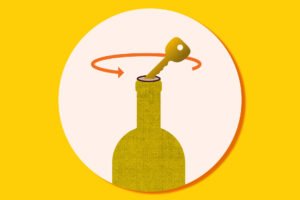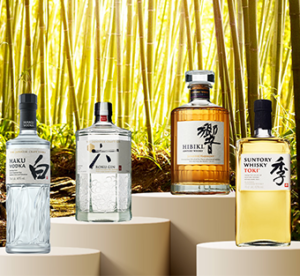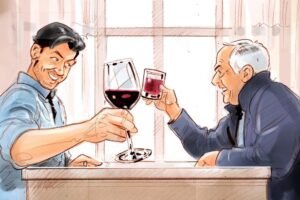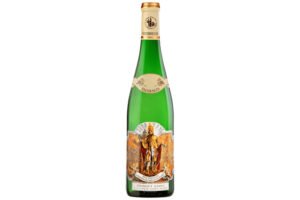Bringing Fresh Verve to Veuve
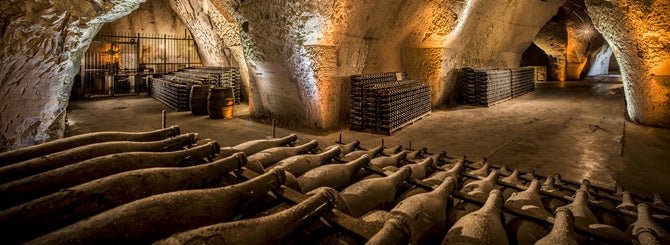
[ad_1]
Veuve Clicquot’s cellarmaster Didier Mariotti talks to us about new wines and new ways of working.
There have been several significant changes at Veuve Clicquot over the past decade, from the introduction of a new cuvée (Extra Brut Extra Old) to a restyling of their two most famous wines, the Yellow Label and their prestige cuvée, La Grande Dame. But perhaps the most recent noteworthy news took place when Didier Mariotti was named the new cellar master at the beginning of 2020, upon the departure of Dominique Demarville, who had held that position at Veuve Clicquot since 2006.
Mariotti, a native of Switzerland, grew up in the wine industry, as his parents owned wine estates in Corsica and Burgundy. After receiving a diploma as a food and beverage engineer, he decided to stay in Champagne rather than head back to Burgundy, working at several houses, including GH Mumm in 2003, where Demarville was chef de cave. When Demarville left Mumm to take on the lead position at Clicquot, Mariotti was named cellarmaster at Mumm. He subsequently moved to Clicquot in 2019, working as an assistant to Demarville.
Wine-Searcher interviewed Mariotti at the Clicquot headquarters in Reims about several topics, ranging from the insight he acquired during his tutelage with Demarville to his plans for Veuve Clicquot in his position as the eleventh cellar master in this Champagne house’s more than 240 years of history.
What’s the best thing you learned from your experience with Dominique Demarville?
He has a very strong vision of wine, and he is very inspiring in transmitting his vision. He has a great love of Pinot Noir, especially Pinot Noir from the north of the Montagne, such as Verzy, Verzenay and Mailly, that part of Champagne, which is very interesting when you add that part of Pinot Noir into the blend.
We worked very closely at GH Mumm to rebuild all the reserve wine. It’s really something I’ve learned also with him about the reserve wine. When I joined Veuve Clicquot, I was really surprised by the reserve wine collection at Veuve Clicquot, which is really amazing. I think it may be the biggest reserve wine collection in Champagne.
It’s very important when you work on the non-vintage to have this collection of reserve wine to help a lot to maintain the consistency of the non-vintage, which is really something important for the house – it’s a signature of the house.
What is the percentage of reserve wine in the Yellow Label?
About 40-45 percent now. But we have three different levels of reserve wine at Veuve Clicquot, which is something very different from most of the houses, I would say. We have the young reserve wines, which are between one and three years old. Then we have what we call the mature reserve wines, which are between four and 10 years, and we have what we call the spices, which are older than 10 years.
Each reserve wine brings something different, and they are very interesting. At Veuve Clicquot, the difference is that we keep all the reserve wines vintage by vintage, varietal by varietal and year by year. We don’t keep them blended.

© LVMH
| The cellars at Veuve Clicquot contain some of the oldest reserve wines in Champagne.
How would you best describe the Yellow Label? What is your approach with this wine?
The idea for the Yellow Label is to try and grab the fruit from the tree, so you can taste the juiciness and the freshness of the fruit. At the same time, it’s quite smooth, and you have some structure and texture in the mid-palate, which comes from the aging on the lees in the cellar, but also comes from the reserve wines. All the complexity and all the delicate notes of aging are coming from the reserve wine.
The yellow label is such a well-known wine. Are you limited as to what you can do when you make this wine?
The goal of the Yellow Label is to respect the style that was defined years ago. So, if you do something, you have to do it very gently in a way that nobody will see the difference, because everything is changing. You have to anticipate what the tastes of the people will be like in three to five years, and to anticipate that into the blend.
People like dry Champagne more than they did 50 years ago when they drank very sweet Champagne. You have to understand how the consumers’ tastes are changing, so you can slowly and gently adapt the style. The style is about Pinot Noir, which is 45-50 percent of the blend, it’s about the reserve wine. The percentage of the reserve wine has changed a little bit and has increased a little bit year after year, but you don’t see the difference when you taste the Yellow Label.
Tell us about the new vintage of La Grande Dame, the 2012, and how it compares with the 2008.
It’s quite well balanced, you have a lot of harmony to the wine. You can feel the strength, you can feel the structure of the wine, but it’s very well balanced, compared to 2008, which was a very acidic vintage. We knew that 2008 would need more time to age, because with this high level of acidity, the wine would need more time to develop, to what I would say, create a structure in the mid-palate and texture.
But for 2012, it’s very elegant. What I like about the 2012 is the finesse, it’s very elegant. I like the verticality of the wine. A big wine needs structure, the backbone. It’s like a plant, you have to raise it first and then you can develop. For me the verticality is the structure of the wine with the Pinot Noir, especially the Pinot Noir from the north, which helps to bring the backbone.
La Grande Dame for me has to be very elegant, first. When you talk about La Grande Dame, you can imagine a lady that’s quite elegant, a tall lady, and it’s the same for the wine.
I know with the 2008, Dominique wanted to make it a Blanc de Noirs, but settled for 92 percent Pinot Noir.
Dominique decided to go to a very challenging blend with this very high level of Pinot Noir. I love that challenge.
We are talking a lot about Blanc de Blancs Champagne. They are quite famous; we have a lot of Blanc de Blancs. But for me a Blanc de Noirs or a Pinot Noir-dominant blend is interesting. I don’t know why, but a lot of people are thinking when you talk about a Blanc de Noirs, it might be a very strong and very powerful wine. I don’t know why people have this image in their mind that Pinot Noir is about power. For me, Pinot Noir is not about power, it’s about strength, it’s about vibration, it’s about energy, especially the Pinot Noir from the north.
They also have this very interesting characteristic which is bitterness, and bitterness helps to maintain a very long finish, because it brings that saltiness at the end in the mouth.
Regarding 2008, as that was an acidic vintage, do you think that will outlive the 2012?
The 2008 was acidic and it was not easy to find the harmony among all the wines, but I think it’s a great vintage to age. It has a huge potential for aging.
I would say every vintage is different. I love 2012 because it’s very elegant and there is a lot of harmony with the wine. When you start to taste the 2008 now, you taste some toffee, some dried fruits, some nuts, which I really enjoy. I’m not sure we will get the same aromas in five years’ time, but it will age differently.
You know, it’s like a baby. Every child is different, they grow up differently. They are all your children – they will grow up very nicely, but they will be different.
Did Covid force you to change your work routine?
Yes, we did have to change the routine. Normally the tasting room has about eight winemakers together, but we had to reduce to six only because of social distancing in the tasting room.
Something we learned from Covid is that we had to adapt, but nothing is changed as far as tasting the wines. The routine about tasting the wines, tasting the reserve wines in May and June, tasting the vin clairs [still wines] in October and November, is the same, but the only change is just the number of people that are allowed to taste with me we had to reduce, that’s all.
[ad_2]

